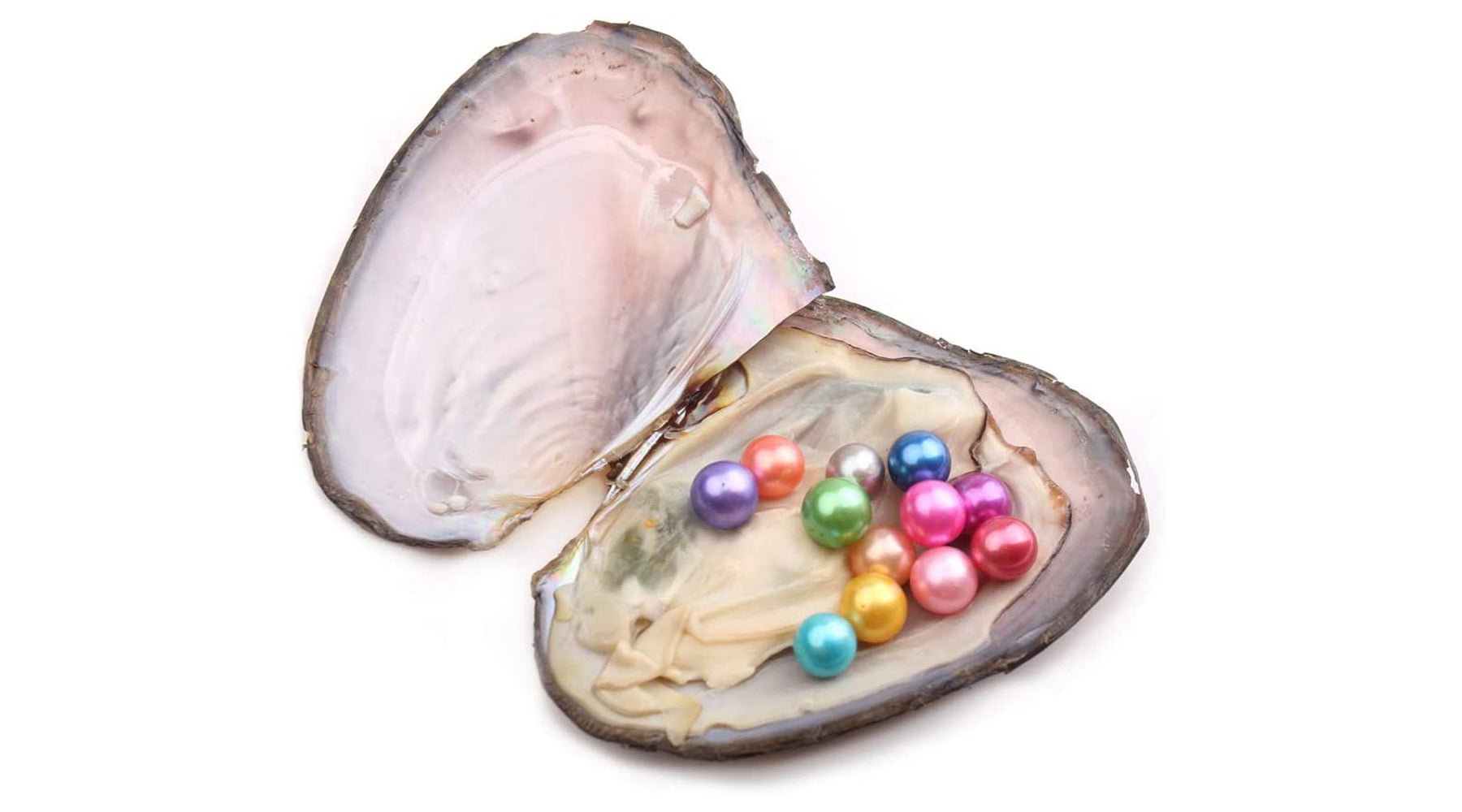Are you someone who likes to play safe with their fashion choices, or do you dare to stand out in the crowd?
Don't mind us; we're just trying to determine if you're a natural or a dyed pearl person!
If you've been thinking of buying some pearl jewelry for yourself, it's crucial to research a little on these gemstones: different types, shapes, colors, luster, etc. And yes, Pearls are considered gemstones.
In previous blogs, we discussed different types of pearls and their shapes, provided a detailed guide on how to buy pearl jewelry, and compared Akoya and Freshwater pearls to list their differences.
In this blog, we'll guide you through what dyed pearls are and how to tell them apart from naturally-colored pearls. Stay tuned!
What are Dyed Pearls?
A little disclaimer before we start: Dyed pearls are NOT fake pearls! They are 100% original pearls that have been dyed.
You might be wondering why someone would dye a natural pearl? Doesn't that ruin its original quality? On the contrary, some pearls are dyed to enhance their beauty and achieve rare colors not found in natural pearls.
Just because those pearls are artificially dyed doesn't mean they're fake (I thought we should clear that misconception!)
Why Buy Dyed Pearls?
Shades like blue and green in natural pearls are rarely found. The next best alternative is to dye the pearls for those desired colors.
Dyed pearls are more affordable than natural pearls. This makes them affordable if you want a particular color but can't invest in something pricey like a Tahitian pearl.
Key Differences Between Dyed and Natural Pearls
One little thing you have to be careful of is: Don't. Get. Scammed!
Some vendors sell dyed pearls at a price point similar to natural ones. You wouldn't want to overpay now, would you?
Don't worry! We got you.
We will teach you how to spot the differences between dyed and naturally colored pearls. So, let's start this crash course.
1. The price tag!
Like Tahitian and South Sea pearls, pearls with natural hues are expensive. This is why dyed pearls are a cheaper alternative to naturally colored ones.
The biggest giveaway is whether the pearls have a lower price tag. Here's an example:
Suppose you want to buy deep-colored pearls. Tahitian pearls can go up to $25,000 and beyond. So, it's too good to be true if someone sells you an "authentic" Tahitian pearl necklace for $100.
However, sellers may have their reasons for pricing the pearls lower than the market price. In that case, look for other differences between the two pearls.
2. Drill-hole test
Another way to identify dyed pearls is through the area where the drilled holes are. If the nacre (nay-ker) color is white, but the surface color of the pearl is a different shade, it's a dyed pearl.
Want to find out more about nacre and how pearls are formed? Check out our article: Does Every Oyster Have A Pearl?
A natural pearl will have the same color throughout, even inside the pearl. This is because nacre determines the color of a pearl, and since pearls are made up of layers of nacre, natural pearls will have the same color inside and out.
Another way to spot if the pearl jewelry you have been eyeing is dyed is if the color is concentrated around the drill hole or any part of the pearl itself.
2. Size of the pearl
One of the easiest ways to differentiate between the two pearls is to compare their sizes.
Tahitian and South Sea pearls are typically larger, with an average range of 8mm to 18mm and 20mm, respectively.
If the pearls are tiny, there's a big chance they're not Tahitian and South Sea pearls! They might be Freshwater pearls which are typically smaller in size. These types of pearls would have been dyed to achieve the signature color of Tahitian pearls or the gold color of the Golden South Sea pearls.
We've previously discussed pearl sizes in one of our previous blogs, The Ultimate Guide to Buying Pearl Jewelry, in case you want to know more about it!
3. Color and luster
And now, the last difference is an essential factor where you observe the pearl's "perfection", color, and luster. Contrary to popular belief, natural pearls are rarely perfect in color and shape. That might not be the case with dyed pearls.
Another thing to notice is the color of the pearl. Some colors don't occur naturally, like bright pink and neon shades, so if you stumble upon hot pink colors, you know they're dyed.
You can also tell the difference by looking at the luster of the pearls. While Akoya pearls are known for their mirror-like luster, it still looks natural.
If your pearl jewelry has an overly metallic luster, there's a good chance they're dyed pearls! Pearls are a natural phenomenon and rarely perfect in every aspect, if at all.
The Bottom Line
There are many ways one can differentiate between dyed and natural-colored pearls: the pearl's price, size, color, and luster, and the drill-hole test. Knowing these differences can save you from getting scammed by vendors.
On that note, if you're searching for a trusted vendor to buy pearls, look no further than DezLin!
We are a family and veteran-owned business based in Lodi, California. We have an extensive range of pearls for you to choose from. Oh, and we offer same-day shipping globally!



